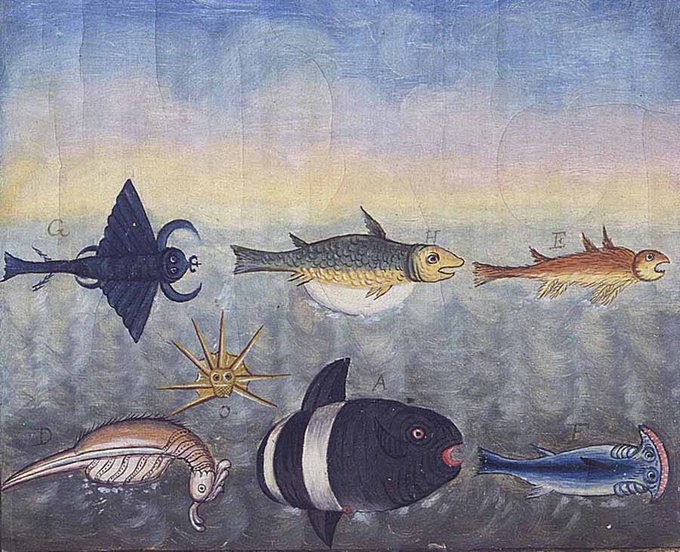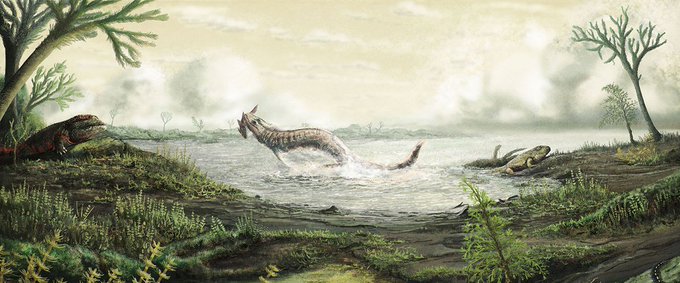CarboniferousのTwitterイラスト検索結果。 95 件中 5ページ目
Some pictures of a large-scale diorama depicting life in a Carboniferous coal swamp.
@ProfTimOB There are discoveries to be made in the stones of 108 steps. Carboniferous trace fossils, probably left by burrowing bivalves.
Ophiacodon is an extinct synapsid that roamed Europe & North America during the Late Carboniferous. They grew to 3 metres in length & spent a lot of time in the water.
(Credit: Mineo Shiraishi)
The best type of day out: fossil hunting on the dramatic Scottish (Fife) coast with @GeosciencesEd undergrads. Field trips during class time are wonderful... Carboniferous crinoids, corals, trees, trace fossils galore!
Frosterley marble is a black limestone containing fossil corals & crinoids of the Carboniferous Period. When polished it looks like marble.
In 2014 @durhamcathedral was listed by the Geological Society as one of the best Geosites in Britain for its sandstone & Frosterley marble.
Crinoids aka Sea Lilies are cousins of starfishes & sea urchins, most of which suffered mass extinction at the end of the Permian period.
"Crinoid fossil slab"
Indiana, USA
Geologic Age: Paleozoic - Carboniferous
Smithsonian Institution National Museum of Natural History
Italian noise/prog/jazz legends @zuism play @thekazimier Stockroom on 15th August to celebrate 10 years of their seminal album, Carboniferous.
Snap up a ticket via @TicketQuarter here! ➪ https://t.co/IV1u1r4HTF
Belantsea is an extinct cartilaginous fish that lived about 350 million years ago during the Lower Carboniferous. They had a beak-shaped mouth which allowed them to graze corals.
(Credit: Melissa Frankford)
Drawing underrated prehistoric animals 1/?: Diasparactus, an amphibian from Lower Carboniferous, munching on some ferns
A bit of urban ichnology for #FossilFriday. Escape shafts of the freshwater mussel Pelecypodichnus and other traces in a Carboniferous gritstone kerbstone located on a flight of steps in Macclesfield.
#WorldWaterDay Life arose in the sea and it was in the Carboniferous, about 600 ma, when the first animal groups began to invade the terrestrial environment. Therefore, the greatest diversity of morphological structures and life strategies occurs in the sea #Biodiversity #SeaLife
#Tedtalk #Paleoart #2: A post-extinction Carboniferous ocean, featuring sea lilies (crinoids) and shell-crushing fishes. By @paleocreations
Balanerpeton skull, a Carboniferous temnospondyl amphibian - looking like a fossil Pac-Man ghost this #FossilFriday
A preview of one my big Carboniferous paintings for @NtlMuseumsScot is already online: https://t.co/TGrUWcAdEj
































